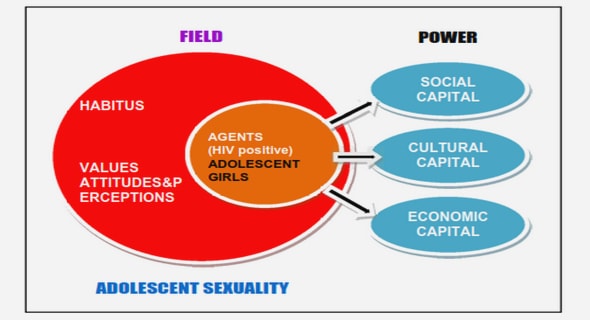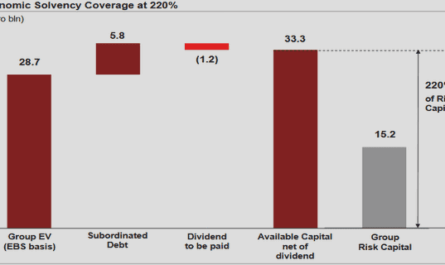Get Complete Project Material File(s) Now! »
Seismicity rate patterns of dyke propagations
On PdlF, the normalized time evolutions of the cumulative number of earthquakes for each dyke intrusion do not show any specific change in pattern toward eruption time (fig. Etna 2002 eruption; c) MI 2000 dyke intrusion; d) Etna seismicity apart from any intrusion (10/29/2002 ˆa˘A ¸S 12/31/2003). t = 0, mainshock occurrence, t > 0, averaged seismicity rates following mainshocks. Mainshocks are events (i) of any magnitude not preceded by another event for a time equal to the median of the inter-occurrence times and (ii) occurring within 10% – 90% of the intrusion duration window to avoid border effects [Helmstetter 2007, personal communication]. Curves are averaged over: (i) all mainshocks from a given magnitude class, and (ii) all magnitude classes. The power law decay of seismicity rate quantifies the percentage of aftershock, which is negligible for a), b) and c) and close to 20-25% for d), with a 1/t0.7 decay within 0.2 days after the mainshock. 2.2). The upward and downward bending patterns appear as not significant when tested against a Poisson process.
As shown in figure 2.3 and 2.4, most of them are within the fluctuations we reproduce when sub-sampling Poisson time series two orders of magnitude larger in size than single datasets. From each generated Poisson time series, we draw one the one-hundreds-subsets mostly contain data fluctuations, preventing from discriminating observed from Poisson distributions. When tested for single PdlF seismic datasets (fig. 2.3) five distribution fluctuations over seven are not significant when tested against a random Poisson process. It indicates a more than 70% probability that data distributions are described by a Poisson process. There is no correlation between the shape of the seismicity rate curves and either the erupted volumes or the durations of the seismic swarms (fig. 2.2, 2.3, table 2.1).
When stacking seismic time series before PdlF eruptions in the period 1988-1992, Collombet et al. [2003], resolve an average power law increase in the average daily VT seismicity rate 10-15 days prior to the eruption. Excluding the very eruption day data, the authors focus their attention to the reservoir fracturing phase. On the same period of study, and by using the same stacking techniques on the following dyke injection phase, average VT rate does not show any power law accelerating pattern towards eruption time. Red dashed curve in fig. 2.2 indicates a power law pattern with an a exponent of 0.7 [Collombet et al., 2003]. The same result holds for Etna 2002 and Miyakejima 2000 dyke intrusions (fig. 2.4), while time durations, induced seismicity rates and maximum earthquake sizes span on 3 orders of magnitude (table 2.1). Note that from now on, we treat the average of the 7 dyke injection at PdlF as a single intrusion in order to ease comparisons among the three volcanoes.
To compare the earthquake productivity per surface and volume unit during dyke injections on the three volcanoes, we normalize each seismicity rate by its completeness magnitude, magnitude span, dyke surface and volume (tables 2.1 and 2.2). We find that no matter whether the system is open (i.e. Etna and PdlF volcanoes) or closed (i.e. Miyakejima), the seismic productivities are close together during dyke injection, ∼ 103 eqs/day/km2. It suggests that a dyke propagation produces similar fracture densities during its propagation no matter the volcano system is defined as open or not. Any possible viscosity effect on seismicity rate cannot be quantified for these 3 volcanoes.
Seismic energy release rate patterns during dyke intrusions
Analogously to the seismicity rate, the rate of seismic energy release during the dyke propagations at PdlF, Etna and Miyakejima intrusions, turned out to be constant in average (fig. 2.5). The fluctuations we observe apart from the mean value are reproduced by randomly picking the same number of events as our time series in the corresponding Gutenberg Richter law for each volcano. It confirms the lack of any temporal trend.
The steady state of energy release pattern over time is confirmed by the constant b-value recovered during the Miyakejima dyke propagation, after a very short duration initial transient (fig. 2.5, inset). This initial transient may be due to the lack of some smaller events in the seismic catalogue at the very beginning of the seismic crisis.
The average energy release rate during PdlF dyke propagations is one order of mag- nitude smaller than during the Etna and Miyakejima intrusion (fig. 2.5). This mimics the relative scaling between the dyke sizes for the three volcanoes we work with. Peder- sen et al. [2007] demonstrate that background stress state is a dominant factor governing seismic energy release during magmatic-induced seismic crisis. The above statement could therefore entail similar reference stress states for the three considered cases. To further check for any possible scaling effect, we normalize the observed seismicity rates on the three volcanoes by the same virtual completeness magnitude (mc=0.2) and magnitude spread (¢M = 1.4). Scaling of these normalized rates (R∗) on the three cases, mimics the one we observe when comparing the size of the largest brittle fracture during each intrusion, Mmax = 2.6 − 4.2 − 6.5, to the dyke lateral extension B =< 1 − 6.6 − 20 km, for PdlF, Etna and Miyakejima respectively, see table 2.2. It argues for the seismicity rate during dyke injection to be mostly dependent on the dyke size. Lack of precise magma viscosity estimates prevents for evaluating the role of this parameter in determining the fracturing density induced by the magma intrusion. In this framework the larger magnitudes we ob- serve at Miyakejima than, at Etna and PdlF, respectively, emerge from a higher number of events drew from a Gutenberg-Richter distribution on Miyakejima than on the other two volcanoes.
A generic model for dyke propagation in basaltic volcanoes as mapped from VT seismicity patterns
When analyzing the seismicity contemporary to nine dyke intrusions, i.e. PdlF: 6 eruptions and 1 intrusion, 1988-1992; Etna: 2002 eruption and Miyakejima: 2000 intrusion, we recover stationary seismicity and energy rates (fig. 2.2, 2.3, 2.4 and 2.5). Note that this seismicity rate is 2-3 orders of magnitude larger than the background seismicity rate. We tested that most of the fluctuations around the average constant event and energy rates can be reproduced when sub-sampling a Poisson time series and the Gutenberg-Richter magnitude distribution, respectively.
Using Acoustic Emissions (AE) at laboratory scales, similar stationary patterns are reproduced during strain controlled experiments, e.g. paper peeling, [Salminen et al., 2006], or during secondary creep deformation of rocks, [e.g. Amitrano and Helmstetter , 2006]. Numerical simulations of static fatigue of rock during creep processes [Amitrano and Helmstetter , 2006] reproduce both the stationary pattern for energy and seismicity rates and the lack of aftershock patterns within local brittle failures, similarly to the seis- micity patterns we resolve contemporary to the dyke intrusions (fig. 2.4, 2.5). This holds during the simulated secondary creep phase, when Amitrano and Helmstetter [2006] as- sume an exponential relationship between time-to-failure and applied stress.
Accordingly, the seismicity patterns we observe during dyke propagations, further argue for the dyke propagation to be a scale independent strain driven process that induces diffuse brittle damage within the volcano host rock. As discussed by Rubin and Gillard [1998]; Grasso and Bachelery [1995], the seismic response of a volcano to dyke injection is a diffuse brittle damage within the shallow volcanic edifice. It evidences the best candidate for driving the seismicity induced by the dyke propagation is the (¢V ) volume change induced by the ongoing dyke intrusion within the shallow volcano structure.
For incompressible magmas, the magma flux in the dyke equals the volume of magma injected through the cross section into the dyke in the unit time. It corresponds to the volume change generated by the dyke within the volcano system in the unit time. The observed stationary seismicity rate accompanying dyke injection highlights therefore a sta- tionary volumetric flow rate q(z, t) of magma into the dyke, in agreement with the hypoth- esis made by Lister [1990a], who numerically solved the equations governing crack width and fluid pressure for a buoyancy driven crack.
Seismicity rate and dyke velocity in homogeneous medium
In the previous section we related the seismicity rate induced by the dyke intrusion to the flux injected at the dyke inlet. Because most of the physical and numerical experi- ments simulate dyke propagations in a homogeneous medium, we discuss here the possible relationship between the seismicity rate and the dyke injection velocity in the homogeneous medium context.
Rivalta et al. [2005]; Rivalta and Dahm [2006] suggest a direct relationship between the dyke propagation velocity and the number of dyke-induced earthquakes on the base of laboratory experiments on homogeneous gelatin. On this hypothesis, the stationary seismicity rate we observe on the three volcanoes during dyke propagation would imply a constant propagation velocity of the fluid-filled fracture within a homogeneous medium.
On the other hand, during the initial phase of the vertical dyke propagation, when the excess pressure dominates the propagation, a dimensional estimate of the dyke propagation velocity, U, argues the dyke velocity to scale with the dyke length during dyke growth [Rubin, 1995]: U ∼ μamePc o ld, (2.2)
Table of contents :
1 Theoretical background
1.1 Volcano seismology
1.2 Mass Transport Processes at Volcanoes
1.3 Origin, Mechanics and Characteristics of Earthquake Occurrence
I Seismic Signature of Dyke Propagation
2 Brittle creep damage as the seismic signature of dyke propagations within basaltic volcanoes
2.1 Introduction
2.2 Data
2.3 Seismicity patterns during dyke intrusions
2.4 A generic model for dyke propagation in basaltic volcanoes as mapped from VT seismicity patterns
2.5 Concluding remarks
2.6 Data and Resources
3 A Constant Influx Model for Dyke Propagation. Implications for Magma Reservoir Dynamics
3.1 Introduction
3.2 Models of dyke propagation
3.3 Case study: The August 22 2003, Piton de la Fournaise eruption
3.4 Conclusions
4 Space and Time Seismic Response to a 60-Day-Long Magma Forcing. The 2000 Izu dyke Intrusion Case
4.1 Introduction
4.2 Data
4.3 From the earthquake rate to the stress history
4.4 The forcing rate as a tool to estimate the background seismicity in a point process
4.5 The effect of a long duration forcing on a system
4.6 Discussion and conclusions
II Seismic Signature of Simple Volcano Processes
5 Seismic Signature of Magma Reservoir Dynamics at Basaltic Volcanoes, lesson from the Piton de la Fournaise Volcano
5.1 Introduction
5.2 Brittle damage models for PdlF reservoirs dynamics, the State of the Art
5.3 Testing models for PdlF reservoirs dynamics
5.4 Concluding remarks
6 How is Volcano Seismicity Different from Tectonic Seismicity?
6.1 Introduction
6.2 Data
6.3 Analysis of interevent time distributions
6.4 The ETAS model
6.5 Discussion
6.6 Concluding remarks
6.7 Data and Resources
7 Short-Term Forecasting of Explosions at Ubinas Volcano
7.1 Introduction
7.2 Ubinas volcano
7.3 Data
7.4 Long Period seismicity patterns before explosions
7.5 Predictability of explosions from LP earthquake rate on Ubinas volcano
7.6 Discussion and conclusions
General Conclusions
Conclusions G´en´erales
A Line Creep in Paper Peeling
A.1 Introduction
A.2 Methods
A.3 Creep velocity
A.4 Statistical distributions
A.5 Measures of correlated dynamics
A.6 Conclusions
B Rate-and-State friction model
B.1 Earthquake nucleation
B.2 Effect of Stressing History on Earthquake Rate
C Change Point Analysis
Bibliography


